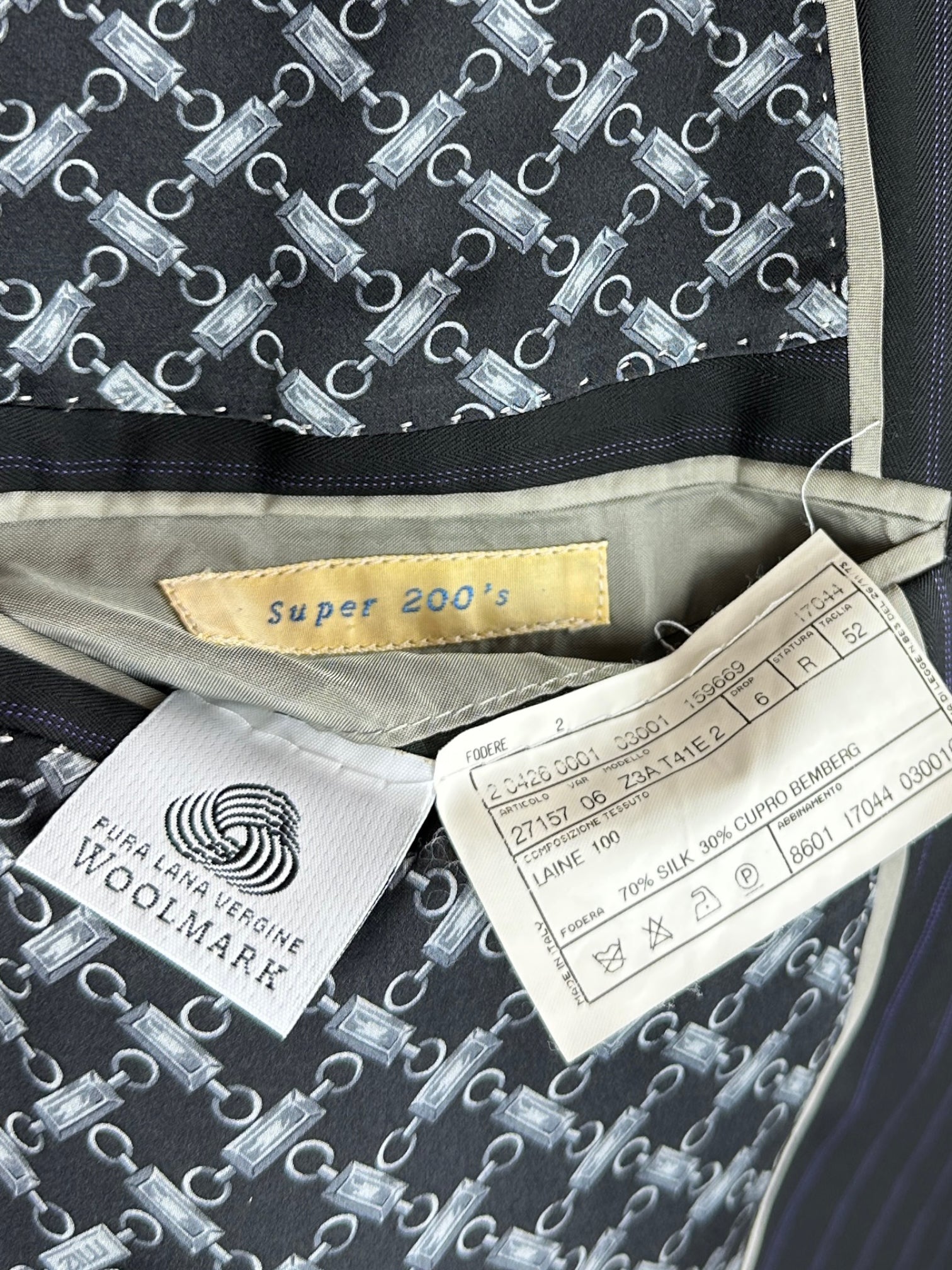







Zilli Black Super 200's Pinstripe Suit
52 IT / 42 US / Large
Composition: 100% Super 200's Wool
Color: Black
Pattern: Pinstripe
See how we measure our sartorial items
Discover the customization possibilities by visiting our tailor alteration guide
Shipping
- Complimentary shipping on orders over €200 (Netherlands), €500 (EU), and €1,000 (rest of world).
- Orders under these amounts: shipping rates depend on your country.
- Customs duties or import fees may apply and are the customer’s responsibility. The courier may charge additional fees.
Returns
- You have the right to return your order within 14 days of delivery.
- If you wish to return an item, please notify us within 48 hours of receiving your order.
- Return shipping is at the customer’s expense.
- A 10% restocking fee will be deducted from your refund for all returns.
Please carefully review all measurements and quality control notes in the listing before purchasing. Return shipments have an environmental and economic impact. For any questions or if you need help, feel free to contact us before placing your order.
General Note: While we inspect each item to ensure its quality, please note that minor imperfections may be present due to the preloved nature of the garments. We strive to represent every item accurately, but subtle signs of wear may sometimes go unnoticed. We appreciate your understanding and commitment to sustainable luxury.
Choose options









Discover the
Sartorial Details

Full Canvas Construction
A sartorial jacket - or coat - needs an interlining that will help give it shape and mold it. Canvas gives the item a tailored and crafted look. In short, it breathes life into it. Purely technical, canvas is made from either horsehair, wool, mohair or camel hair. It could also be a mix of them all, with varying thickness and weight. The canvas is stitched to the jacket, often by hand, thus making the canvas pieces 'floating' in the middle of the inner and outer cloth. This gives the jacket added flexibility. The canvas runs from the upper parts, all the way down to the end of the jacket. After you wear your canvassed suit for a while, it will begin to take your shape and look incredibly natural.

La Spalla Camicia
Spalla Camicia roughly translates to 'shirt sleeve' in Italian and is a shoulder style created and popularized by Neapolitan tailors. The name 'shirt sleeve' was so coined due to the characteristic shirring found at the sleeve's head where the fullness of the larger sleeve collapses. Rather than having the head of the sleeve turned back and stitched inside, the head is lapped under and stitched along the top.

Handmade Buttonhole
Handmade buttonholes are made using a chain of knotted loops called purl stitches that make them strong and visually distinctive. It takes about five seconds to sew a regular buttonhole with a machine – a single handmade buttonhole takes about 10 minutes to sew.

Three-Button Closure
Originating from the late 19th and early 20th centuries, the three-button suit closure evolved as a staple in menswear, striking a balance between the more casual two-button and the formal full-buttoned designs. This middle-ground choice quickly became favored for its versatility, offering a neat, elongated silhouette that stood synonymous with both business elegance and everyday sophistication. Over the years, its popularity has seen ebbs and flows, yet it remains a timeless classic in the annals of fashion history.

Barchetta Chest Pocket
Also known as ‘barchetta’ Italian for ‘little boat’, it is so named because this pocket floats on the chest gently angled upward, just like the bow of a sailboat. These pockets echo the lively roll of a lapel that carries the spring of canvas and natural wool, unlike machine-made chest pockets that have a more stamped-out, rectangular shape and less life.

Darts
The tailors adds two darts - think of them as pinched seams - to ensure the jacket’s body achieves a slim silhouette. The process, called mezzo punto riprese, is done entirely by hand.

Mother of Pearl Buttons
Mother of pearl buttons are iridescent buttons made from an inner layer of certain shells. Especially shells of oysters and mussels that contain nacre, the mineral substance that forms pearls. What makes these buttons so iconic is their inimitable pearly finish.

Jetted Pockets
The first jacket pockets were sewn inside the lining or seams of garments, and are called “jetted” pockets. In their simplest form, they consist of little more than a slit. Suits that are the most formal, especially tuxedos, have no flap pockets altogether to give the piece a more streamlined look.


size
52 IT / 42 US / Large


 Curator's Description
Curator's Description Materials
Materials